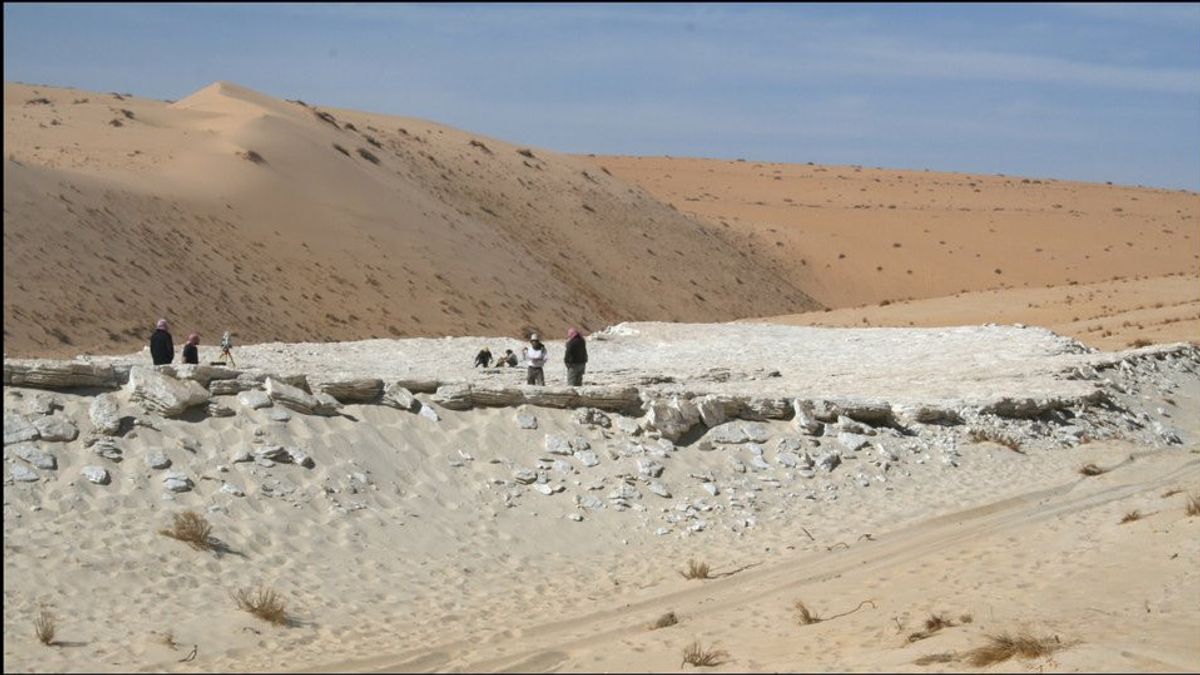JAKARTA - The archeology sector announced new findings of human footprints and ecological portraits of the Arabian Peninsula, which is a prairie about 120 thousand years ago. The study, released by Science Advances, emphasizes the importance of Arabia for the prehistoric study of mankind.
The Max Planck Institutes for Chemical Ecology, Science of Human History, Royal Holloway University of London, and King's College London collaborated on this study. To determine the age of the findings, the researchers used an optical stimulated luminescence technique, which measures the light in the quartz grains and the amount of energy the traces emit.
The result, researchers found that these traces belonged to humans with the number of two to three people. Apart from finding human footprints, the researchers also found hundreds of animal traces at the bottom of an ancient lake located on the northern Arabian peninsula, specifically in the Nefud Desert of Saudi Arabia, an area that has not been studied much to understand human evolution.
Quoted from the Max Planck Institute, this discovery also proves the movement of humans who spread from Africa to the Levant via Arabia. "We immediately realized the potential of this finding. "Fossil evidence footprints provide a brief description of the time they (early humans) stopped, only a matter of a few days," said one of the researchers, Mathew Stewart of the Max Planck Institutes for Chemical Ecology.

Stewart also explained the brief evidence of human transit in the ancient lake region. “We know people visit the lake. But the lack of stone tools or evidence of the use of animal carcasses suggests that their visit to the lake was short lived, "he continued.
This decade-long research has also highlighted the role of the Arabian Peninsula in human prehistory. Arab conditions which are currently synonymous with deserts and drought, turned out to be fertile grasslands. Changes occurred due to extreme climate changes tens of thousands of years ago.
“At certain times in the past, the deserts that now dominate the interior of the peninsula were once vast grasslands with fresh water lakes and rivers. It was during this period of increased climate that human and animal populations spread inland, as the archaeological and fossil records show. " said Richard Clark Wilson, a researcher at Royal Holloway London.

The animals whose tracks have been identified are dozens of elephants, hippos and camels. The presence of elephants is a very prominent finding and reinforces the fact that the area which is now barren was once a stretch of green pasture so that the animals were habitable.
"The presence of large animals such as elephants and hippos, along with open grasslands and large water resources, may have made northern Arabia a very attractive place for humans moving between Africa and Eurasia," said Michael Petraglia, senior author of the study from Max. Planck Institute for Human History which has been conducting research in the area for more than a decade.
The collection of animal tracks concentrated in the area of the ancient lake shows that the animals gathered around the lake before drought conditions hit, causing the animals to seek a supply of water from the remains of the lake. These findings show the importance of Arabia for the study of human prehistory, so researchers are still continuing their research to explore further findings.
The English, Chinese, Japanese, Arabic, and French versions are automatically generated by the AI. So there may still be inaccuracies in translating, please always see Indonesian as our main language. (system supported by DigitalSiber.id)













